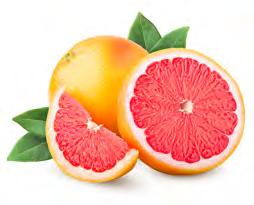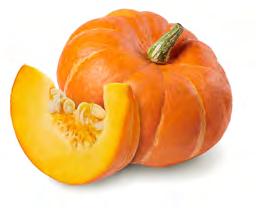
2 minute read
Surprising Heart-Healthy Foods5
By Orlando Health
When it comes to cardiovascular disease, some factors – such as age and family history – are out of your control. But you can adopt healthy lifestyle habits that make a difference in keeping your blood pressure, cholesterol and blood sugar levels in check.
Topping the list? Eating foods that promote heart health.
Cardiovascular disease is the leading cause of death for men and women in the United States, claiming the lives of 655,000 Americans every year. That’s roughly one in every four deaths, according to the Centers for Disease Control and Prevention (CDC). So it’s important to choose foods that will lower your risk.
What Makes a Food “HeartHealthy?”
When shopping, look at the ingredient list and nutrition facts. Pick foods that are:
■ Low in saturated or trans fats
■ High in omega-3 fatty acids
■ Low in sodium
■ High in fiber
Many fruits, vegetables, whole grains and beans are good sources of fiber. Fatty fish is a great source of omega-3 fatty acids. So are some plant-based options like nuts and seeds; plant oils; and fortified foods, including certain brands of eggs, juices, milk and yogurt.
What Benefits Do Heart-Healthy Foods Provide?
Certain vitamins, minerals, fats, and macronutrients can affect your heart health. For example:
■ Unsaturated fats can help reduce your risk for cardiovascular disease and stroke.
■ Low-sodium options can help control blood pressure.
■ Fiber can help with weight management and lower LDL cholesterol.
Heart-Healthy Foods To Add to Your Diet
The Mediterranean Diet — a popular recommendation for heart health — focuses on replacing saturated and trans fats with healthier fats such as monounsaturated and polyunsaturated fats. For instance, instead of cooking with butter, use non-tropical vegetable oils like olive oil, grapeseed oil or avocado oil.
Fatty fish, such as salmon and tuna, also provides omega-3 fatty acids, which have been associated with decreased risk of heart disease. In fact, the American Heart Association recommends eating a variety of fish at least twice a week.
For plant-based, heart-healthy protein sources, choose beans, lentils, nuts and seeds. For healthy carbs, choose a variety of fruits and vegetables.
Beyond the obvious suggestions, here are five foods that might surprise you as being good for your heart.
1. Figs: Bursting with healthy phytochemicals and antioxidants, figs also contain heart-healthy minerals like magnesium, potassium, calcium and iron. Whether you eat figs dried or fresh, they’re a great plant-based food to include in your diet.
2. Grapefruit: Studies have shown that grapefruit — loaded with phytochemicals such as flavonoids and vitamins like A and C — can help fight heart disease and stroke.

3. Beets: Beets are composed of dietary nitrate, which acts as a precursor to nitric oxide. Research shows that nitric oxide can aid in reducing blood pressure.

4. Pumpkin: Full of fiber, pumpkin also contains potassium and vitamin A. You can easily find canned pumpkin (still loaded with nutrients) and pumpkin seeds (filled with high-fiber content). Both are rich in magnesium. For seeds, choose the unsalted kind.

5. Peanut butter: While nuts count as a plant-based protein, so do nut butters. Just make sure you check the ingredient list, which should only list peanuts and a little bit of salt. Avoid brands that add sugars or unhealthy fats like palm oil.

How to Navigate the Grocery Store
Focus on the produce section, where you’ll find fruits and vegetables rich in fiber, vitamins, minerals and other nutrients. With fresh produce, you don’t have to worry about any added sugars, fats or sodium.
While frozen, canned and dried fruits and vegetables also provide nutrients, be sure to read the label. Look for canned vegetables and beans marked “salt-free,” “low-sodium” or “no added salt.” For frozen vegetables, the ingredient list should only include the vegetables. Avoid choosing frozen vegetables with sauces or gravies, as they’re often higher in sodium.
Don’t forget fiber-rich whole grains, like whole grain bread, brown rice, nuts and seeds. When checking food labels, choose options with at least two to three grams of fiber per serving.
And look for “Heart Check Foods” by the American Heart Association — a labeling designation AHA puts on packaging to help shoppers identify heart-healthy foods.
Visit OrlandoHealth.com/Heart or to find a physician.







